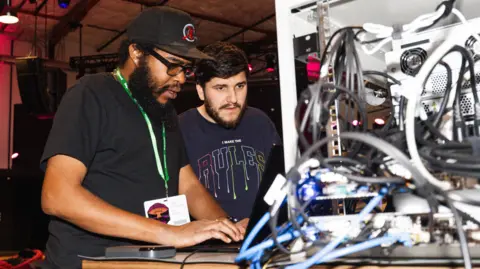**What is Bug Hunting and Why is it Changing?**
Bug hunting represents an evolving frontier within the technology landscape, emphasizing the crucial role that security researchers—often referred to as bug hunters—play in safeguarding digital infrastructures. The concept revolves around individuals or groups probing software systems or applications for vulnerabilities with the objective of reporting these findings to the organizations in question. In return, these companies frequently offer monetary rewards, dubbed ‘bug bounties’, as an incentive for ethical hacking. This dynamic plays a significant part in the cybersecurity ecosystems, which have become increasingly intricate and crucial in today’s digital-dependent world.
One of the focal points of bug hunting’s resurgence is exemplified in the experience of Brandyn Murtagh, a passionate bug bounty hunter. Brandyn’s journey began as a young boy intrigued by gaming and computer technology, leading him to pursue a career in security from the age of 16. By transitioning from a security operations role to a full-time bug hunter, he epitomizes the shift occurring within this domain. As he has reported, the job is rewarding and exhilarating, capitalizing on his knack for finding ingenious ways to breach systems responsibly.
Historically, it’s important to note that the roots of bug hunting trace back to the 1990s when Netscape became the first major organization to introduce cash incentives for discovering security flaws. This pioneering initiative laid the groundwork for dedicated platforms like Bugcrowd, HackerOne, and counterparts in Europe such as Intigriti, which now facilitate a structured environment for bug hunters and organizations needing their services. Bugcrowd’s founder, Casey Ellis, succinctly delineates the moral complexity of hacking, advocating for ethical practices where individuals should operate strictly within legal boundaries.
The establishment of such platforms has revolutionized the bug hunting experience, adhering to defined security scopes that dictate the environments and systems permissible for analysis by these hunters. In the case of organizations utilizing bug bounty programs, tangible results have emerged, such as Axis Communications, which has reported the identification and rectification of significant vulnerabilities in their software through this process.
Financial compensations can be considerable, with stories circulating about top bug hunters earning upwards of $1.2 million in a single year. Despite this, the pool of daily active bug hunters is smaller than the estimated number of registrants on these platforms. As echoed by experts like Inti De Ceukelaire from Intigriti, only tens of thousands are engaged in bug hunting consistently, making the elite group that participates in live events an even tighter circle.
The advent of artificial intelligence (AI) has added another layer of complexity to bug hunting. Rapid AI development has spurred new types of vulnerabilities to be examined. Since AI is designed for widespread utilization, there are growing security concerns if organizations overlook the implications of quick technological implementations. The close interplay between AI advances and cybersecurity has garnered attention within the community, creating new kinds of demands for bug hunters who now must adapt to exploit not just traditional systems, but also AI frameworks.
Cybersecurity researchers like Dr. Katie Paxton-Fear emphasize the importance of integrating collaborative efforts between AI developments and security oversight. However, with AI still a nascent field, there is yet to be a significant breach related to AI technologies. Nonetheless, experts predict that it’s only a matter of time before vulnerabilities emerge in interconnected AI systems, which could have far-reaching implications across various platforms. The landscape of vulnerability identification is broadening, underscoring the importance of security researchers in championing defenses against potentially exploitable software.
As bug hunting enters this transformative phase, securing a proactive relationship between developers and bug hunters is crucial for fostering a safe digital environment. The phrase “once a hacker, always a hacker,” as attributed to De Ceukelaire, serves as a reminder of the enduring nature of these digital sleuths, tasked with tremendous responsibility in a rapidly evolving tech world.



